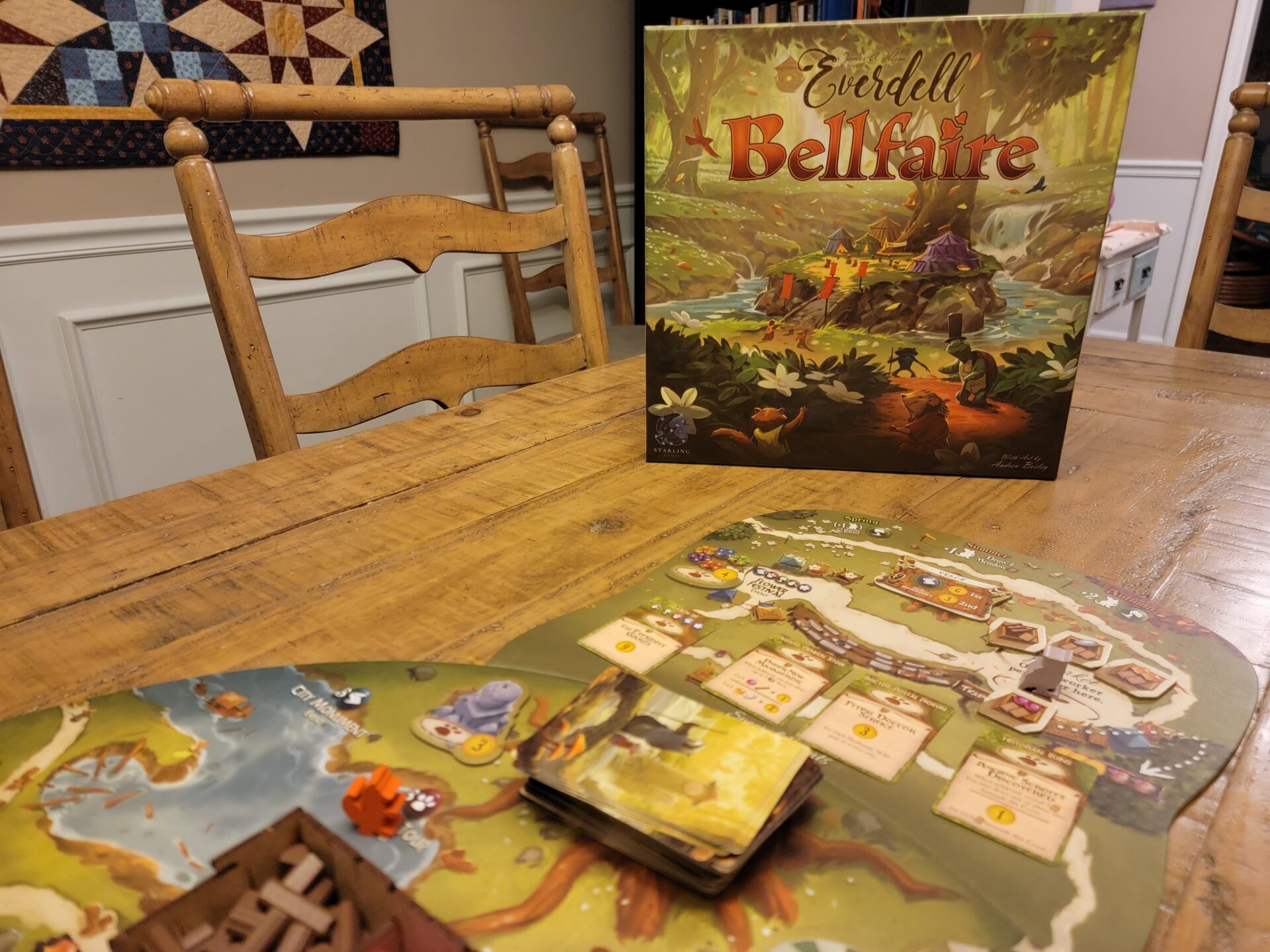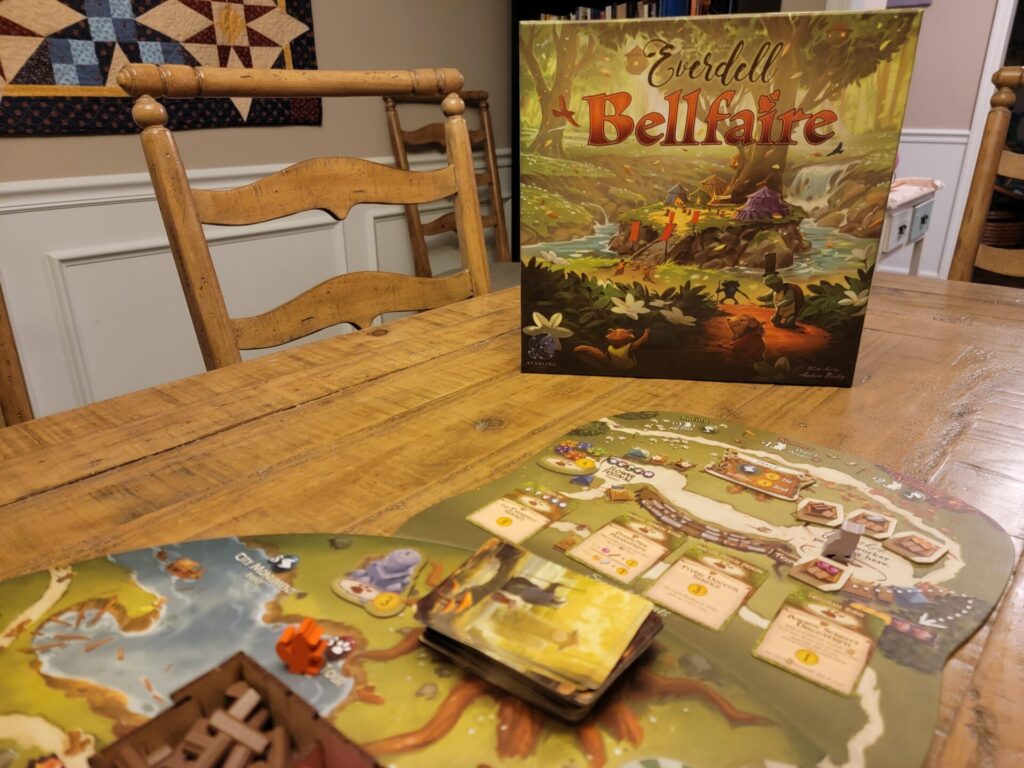
Name: Everdell Bellfaire
Year of Release: 2019
Player Count: 1 – 6 Players
Playing Time: 40 – 120 minutes
Designer: James A. Wilson
Publisher: Starling Games
Primary Mechanisms: Hand Management, Worker Placement, Open Drafting, Tableau Building
Weight (According to boardgamegeek.com): 2.81
Note this review contains pictures that include the 3rd party insert created by Tower Rex. If you are interested, please visit their Etsy website here to support a small business located in Ukraine!
Overview
This is the second review in a series where Board Game Breakdown takes a look at all things Everdell. If you want to read the first installment where we discussed the base game, click here. If you are interested in the third expansion for Everdell, titled Spirecrest, click here. Lastly, you can click here for a piece of prose that I originally posted on boardgamegeek.com that was inspired by a single playthrough of the Spirecrest expansion.
The Bellfaire expansion is advertised as a modular expansion. This means that it comes equipped with multiple modules that players can mix-and-match with the base game. With this in mind, we are going to cover each module separately and how each of these alters the base game. We will cover these modules from the ones we feel that alter the game the most down to the modules that are a little more irrelevant to the game’s core gameplay.
Player Powers
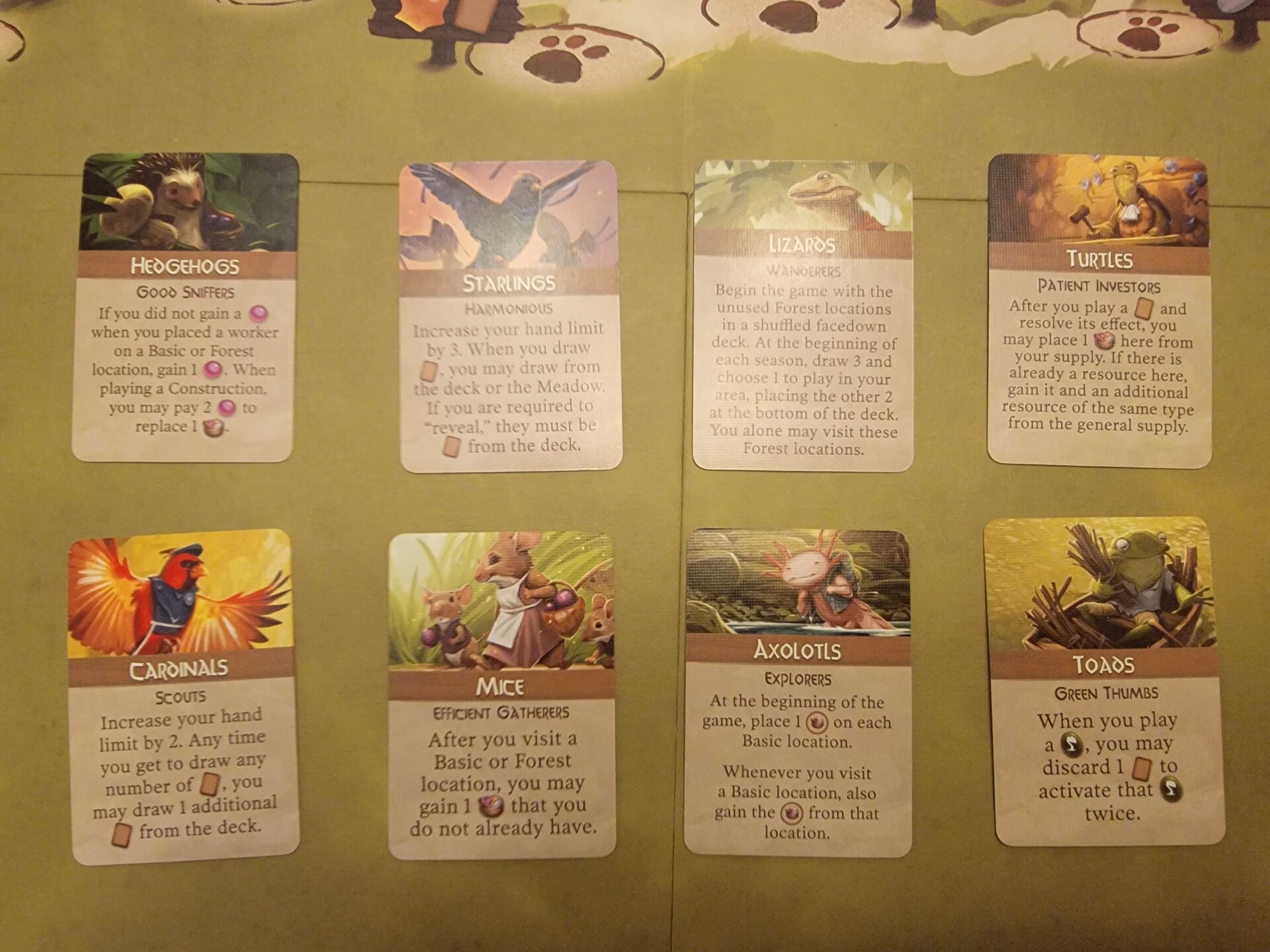
I’ve yet to meet someone who doesn’t enjoy when a game goes slightly asymmetrical and introduces variable player powers into the mix. I’m sure these people exist out there somewhere, but I’ve never ran into them. Player powers in games are just fun. With the Bellfaire expansion, Everdell is given 15 different Player Power cards. This deck is shuffled prior to play and each player is given two cards, chooses one to play as, and places the other back into the box. Each card is themed after a different animal type and the powers on them vary greatly from one to the next. Thankfully these cards never feel overpowering or even complicated. As stated in my base game review, keeping up with all of the actions that trigger other actions can get a bit tricky at end game and introducing another list of things to manage could have been a huge turn off. Instead, the expansion sticks with powers that are fun and will help to enhance your play style as you progress through the game.
Market
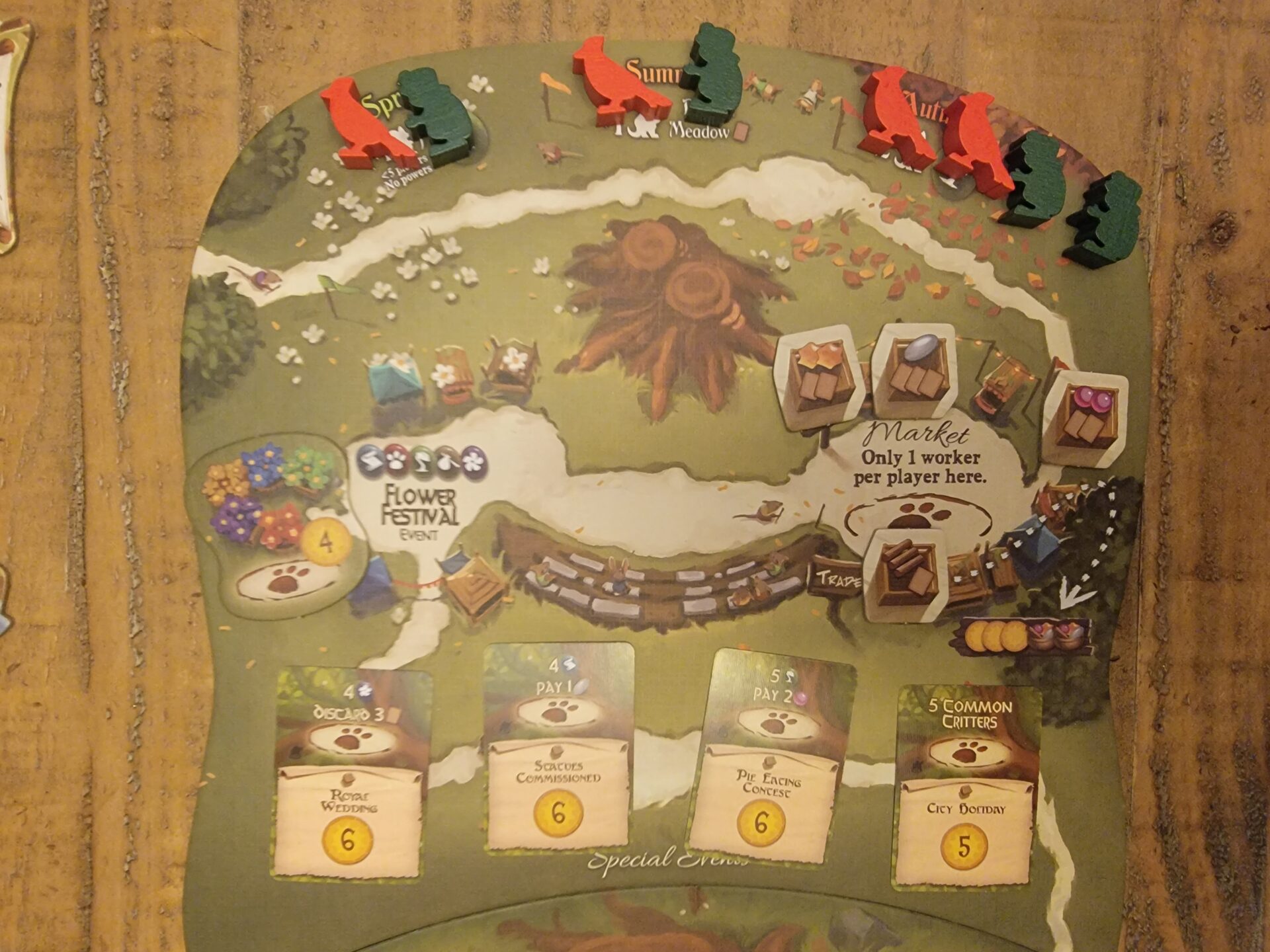
Within the expansion, players will receive a new Bellfaire board that can be set up against the top edge of the base game’s board. In order to use this, the players can’t use the Ever Tree, or at least it can’t sit in the spot that it normally sits in. The Bellfaire board has spaces to hold a few of the new module components but the biggest portion of the board is made up of the new Market.
The Market is an action location that can house one worker per player per season. In the beginning of the game, four Market Tokens are placed on the top portion of the Market, where the sign Gain sits. Each token has some combination of one of the standard resources (twigs, resin, pebbles, or berries) and a number of cards ranging from one to three. When a worker is placed at the Market, they select which token to pick up, and then they are immediately rewarded with the resources and cards marked on the token. Once completed, the token is moved to the bottom portion of the Market area, where the sign that reads Trade is printed. The only method of moving that Market Token back up to the Gain area is to place a worker on the location and then turn in the resources and cards printed on the token. Don’t worry, you’re not going to come back empty handed as when you trade in this manner, you receive three victory point chits and are able to pick two different resources. Again, after this is done, the Market Token can then swing back to the Gain area to be used again.
Personally, I enjoy the thought of the Market since it provides a flexible action location but, in all honesty, I don’t find myself using it very often. I think it would have been more useful if the number of resources you get from each token were slightly different. One token has three twigs on it and a card, but there is already a normal location with three twigs. Sure, that extra card might be good but then the tile swings to the Trade side and that gives my opponent an easy three victory points and two resources if she decides to turn in the three twigs (that she could easily secure from the main board) and a card.
Last thing on the Market is that the designers included a separate Market tile so for players who don’t want to use the full Bellfaire board, they can opt to only use the Market portion. Though I’ve never done this, I appreciate that they made sure that this was truly modular and give the players the freedom to pick-and-choose what they want to use.
Garland Awards
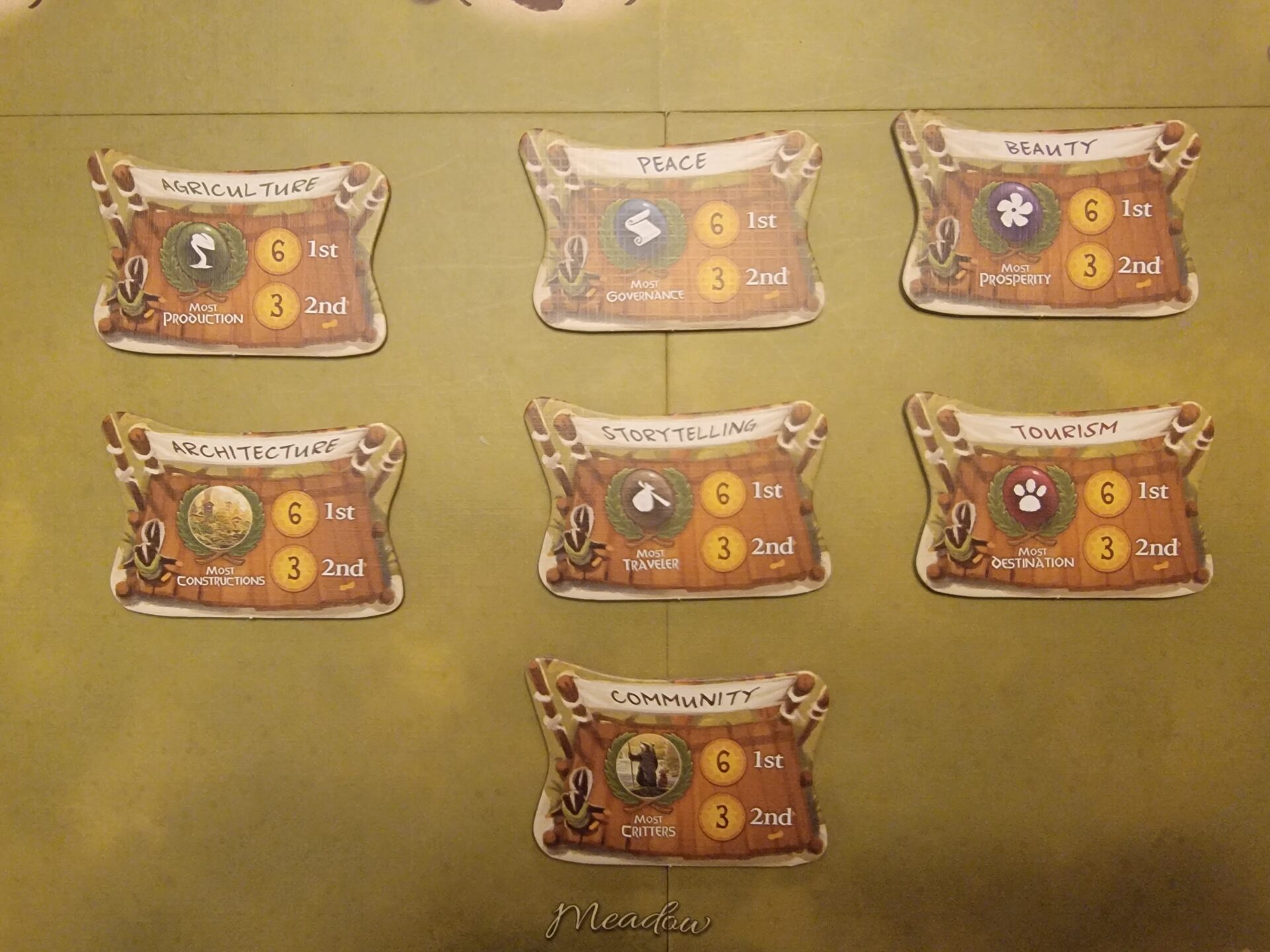
Also included in this expansion are seven tiles called Garland Awards. The rulebook describes these as “special awards granted by the king and queen to cities that display excellence in specific aspects of their city.” The awards boil down to giving players a single characteristic (such as Most Production Cards or Most Critters) that they are competing against each other to win at the end of the game. The winner of the award is given six victory points and second place is awarded three points. Typically, in a 2-player game, I like to play where only the winner is given six points and the other player gets zero. A swing of six points feels much more substantial than a three-point swing.
Flower Festival Event Tile and Special Event Cards
In the same vein as adding the Garland Awards, Bellfaire ups the ante on the different events that players are vying for. The Flower Festival Event tile acts similarly to the four Basic Event tiles found in the base game where a player can place a worker here once he or she meets the criteria and score four points at the end of the game. To be eligible for the Flower Festival Event, a player must have one of each card type in their city.
The expansion also comes with nine new special event cards. This is one of my favorite parts of Bellfaire, as I really didn’t like the Special Events in the base game. I felt that they were too predicted on the luck of the draw when it came to the cards, but the new Special Event cards award you for having a certain amount of a single type of card in your city, and usually cost both a worker to be played as well as some number of resources to be paid. Even though I really like these cards compared to the base game’s cards, these feel very similar to the Garland Awards mentioned earlier and I wish that they were a little more varied in their criteria.
Other Goodies
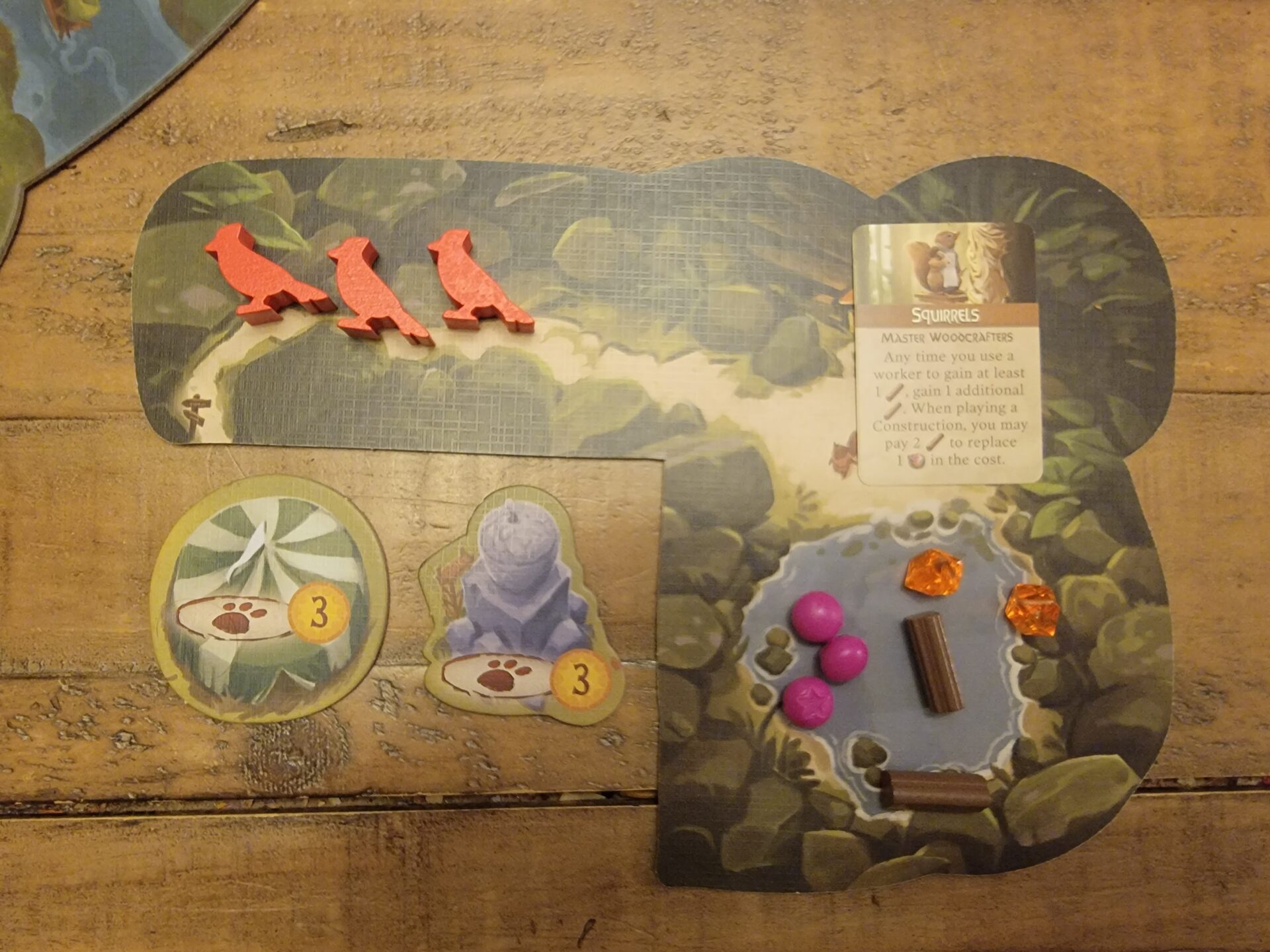
Rounding out the expansion, you get six Player Boards, that I don’t really understand the point of. They are L-shaped pieces that I guess are made to store your meeples and resources, but they don’t, for me, help organize my inventory in any meaningful way. In my wife’s words, we are calling “bogus” on these.
You get four more Forest cards that can be mixed into the standard deck of Forest cards and that’s always nice. There are now rules to make this a five or six player game as well as re-written solo rules to take the new Player Powers into account.
Last, but certainly not least, you get two new animal meeple types. The red Cardinals (a personal favorite of mine) and dark green Toads along with the two Frog Ambassadors you would need for the Pearlbrook expansion.
Conclusion
If you are a fan of Everdell’s base game, then I highly recommend picking up Bellfaire. With the ability to mix-and-match the different modules, there is a little bit here for everyone. I think most people will love the Player Powers and the asymmetry that they bring to the table. At $45.00, this might be a little steep for an expansion and I would have much rather them get rid of the player boards to make this a bit cheaper but again, if you’re a fan of Everdell, I don’t think you can go wrong with Bellfaire, even at this price.
Rating
Ratings are based on 5 main criteria: rulebook, setup, components, art & graphic design, and gameplay. The first 4 criteria are rated 1 to 5 and the gameplay is rated 1 to 10. These scores culminate in an “overall satisfaction” score that is rated from 1 to 10. If the reviewed game has both a solo and multiplayer mode, I have assigned scores separately to give context to which mode we enjoy more.
Links
As an Amazon Associate I earn from qualifying purchases.
Amazon: Everdell Bellfaire Board Game

